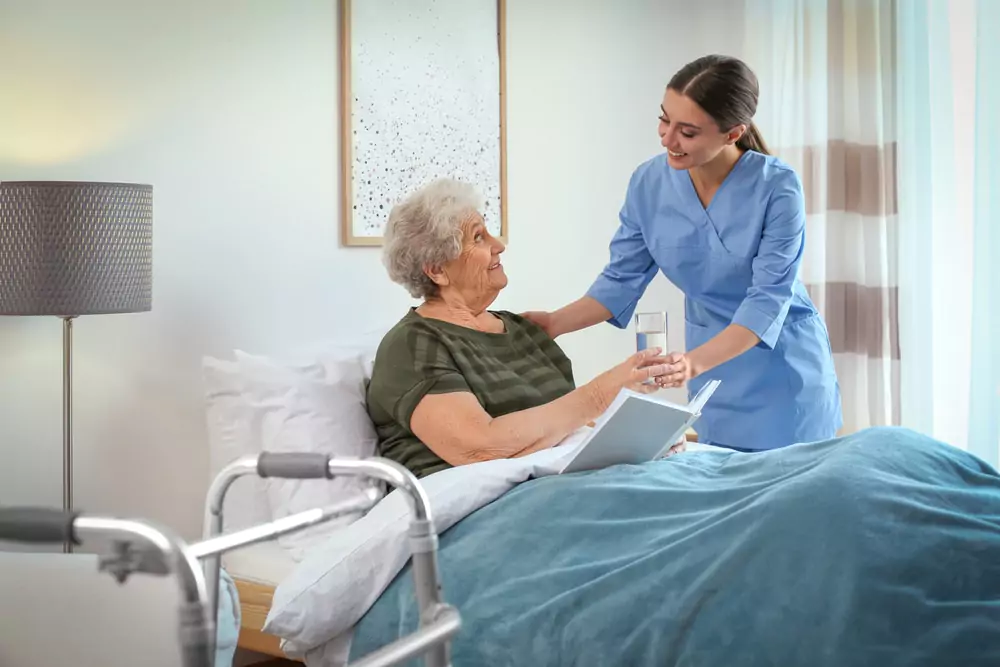Hospice care is an option for Chicago residents who are near the end of life. The focus is on comfort, and services are provided at home, at an assisted living facility, or wherever a patient happens to reside.
The Centers for Medicare and Medicare Services (CMS) has defined four levels of hospice care, and many private insurance plans provide coverage in accordance with the CMS guidelines. Each level is designed to meet different needs, and every certified care provider must provide all four.
For some patients, the hospice journey involves all four levels of care over a relatively short span of time. Others remain on the same level for several months. As such, if you have a loved one who is entering hospice care, you need to know what to expect at every level. Here, the team at Suncrest Hospice shares the important details.
 Level 1: Routine Home Care
Level 1: Routine Home Care
The vast majority of hospice patients receive routine home care. Services are provided wherever a person lives, whether that’s a private dwelling, a nursing home, an assisted living center or a residential facility.
With routine home hospice care, most day-to-day patient concerns are handled by family caregivers. Training is provided, however – those responsible for your loved one will learn how to safely administer their medication, reposition them in bed, transfer them to a chair and how to handle all of the other necessary daily tasks.
After discussing your loved one’s needs and developing an appropriate plan of care, here’s what may be expected:
- The required medical equipment and supplies will be delivered
- Any medications related to their terminal illness will be supplied
- The hospice social worker and chaplain will come by to offer support
- Members of the hospice team will visit daily or weekly, whatever is needed
Family caregivers will know how to contact the hospice care provider in the event of questions or a medical crisis. Most companies, including Suncrest Hospice, have a 24-hour hotline staffed by registered nurses, so there’s always someone available to help.
Level 2: Continuous Home Care
The practice of providing a patient with around-the-clock support from a registered nurse is known as continuous home care. In Chicago, like everywhere else in the country, this level of hospice care is only offered when medically necessary.
In this situation, members of the hospice care team come out to the patient’s home, working in shifts to help the individual through the medical emergency. The approach allows a person to remain at their residence, where they’re most comfortable, instead of going to the hospital when family caregivers are unable to manage their symptoms.
Once your loved one enters hospice, they can receive temporary continuous home care in the event of a crisis, such as:
- Uncontrollable pain
- Difficulty breathing
- Problems swallowing food
- Persistent nausea or vomiting
- Extreme constipation or diarrhea
- New onset seizures
- Serious skin lesions
This is a more intensive level of care, and it’s intended to be temporary. Once the crisis has been averted, hospice patients go back to receiving routine in-home services. Alternatively, transitioning to an in-patient hospice care facility may be the next step.
Level 3: In-Patient Hospice Care
For most hospice patients, pain and other problematic symptoms can be managed at home – and since the home is where people want to be in their final days, hospice care providers make every effort to continue with routine home services.
However, there are times when managing a patient’s symptoms in the home setting is no longer possible. In-patient hospice care is the solution, and services can be provided at a dedicated hospice facility or a local hospital. The goal at this level is to stabilize the patient so that they can return to their home.
Indications that your loved one might need in-patient hospice care may include:
- A sudden decline
- Respiratory distress
- Pathological fractures
- Wounds that require complex care
- Unmanageable restlessness or agitation
In addition, in-patient care may be the answer when symptom relief requires intravenous medication and a patient must be closely monitored. But whatever the reason for this type of hospice care, most patients only stay at this level for a few days.
Level 4: Respite Care
As we mentioned, family caregivers handle most day-to-day patient concerns for hospice patients. Caring for a loved one in the final stages of life is incredibly stressful, and the emotional pressure can really take a toll. That’s where respite care comes in.
Anyone who is eligible for hospice services has respite care covered, and the benefit allows a family caregiver to get a much-needed break. The patient is temporarily transferred to an in-patient hospice care facility for up to five days, freeing the caregiver from their daily responsibilities – and after some time away, they can return, feeling refreshed and ready to resume their duties.
Respite care is advantageous in several scenarios, such as for:
- Caregivers who are physically fatigued or emotionally exhausted
- Caregivers who have thought about moving their loved one to a nursing home
- Caregivers who fall ill and are unable to provide the necessary assistance
Respite care is also beneficial for caregivers who want to attend a graduation, wedding or other special event – and for those who simply need some time to themselves. In any case, if you take advantage of respite care, your loved one will be in good hands.
Suncrest Hospice provides all four levels of care to patients. For more information on our services or our hospice care team, contact us today.


